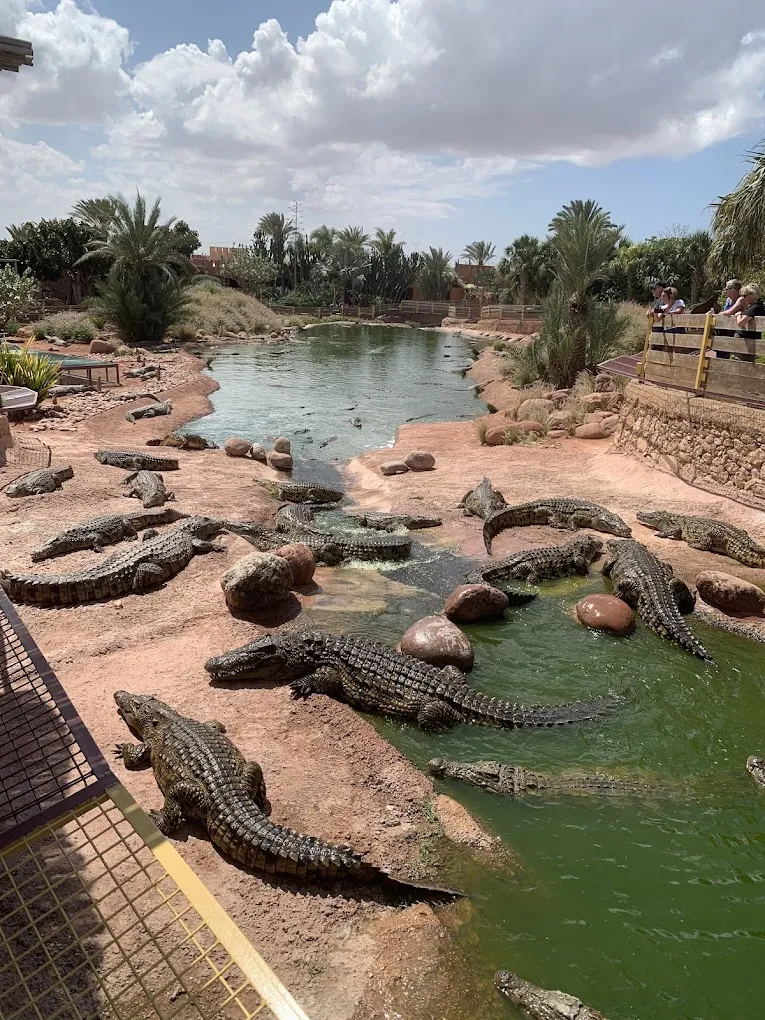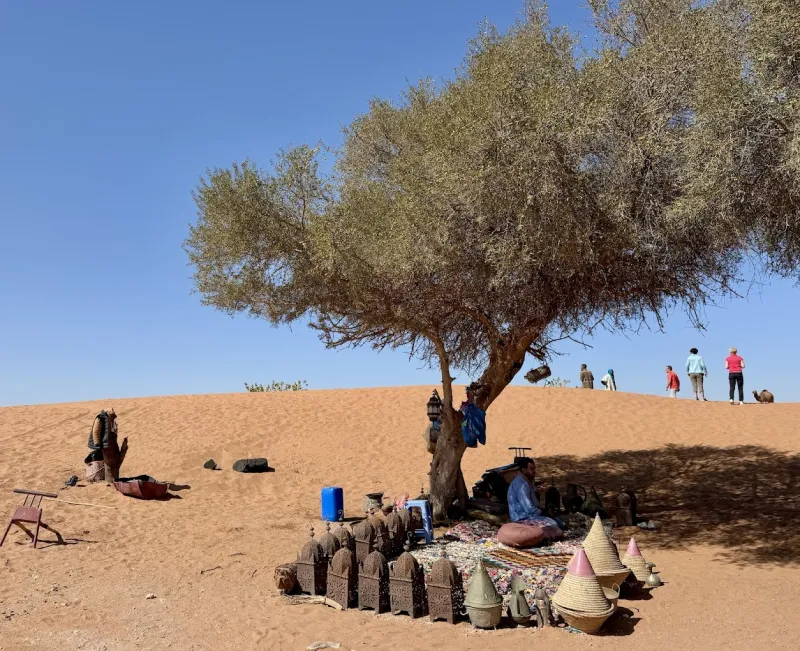Historical Landmarks and UNESCO World Heritage Sites in Morocco: A Journey Through Time
14 مارس 2025Morocco’s rich history and diverse cultural heritage are vividly displayed in its ancient medinas, majestic kasbahs, and numerous historic sites. Home to several UNESCO World Heritage Sites, the country offers an immersive experience into architectural marvels and storied pasts that have shaped its unique identity. In this comprehensive guide, we explore Morocco’s most celebrated historical landmarks, delving into the stories behind ancient cities, fortified kasbahs, and the intricate medinas that continue to inspire awe.
A Tapestry of History and Culture
Morocco’s historical landscape is a living testament to centuries of cultural evolution. From the early Berber settlements and Arab conquests to European influences and modern developments, every stone, alley, and courtyard tells a tale of conquest, trade, and tradition.
Ancient Medinas: The labyrinthine medinas of cities like Fes, Marrakech, and Essaouira are at the heart of Moroccan urban life. These walled cities have preserved traditional architecture, bustling souks, and artisan workshops that have remained largely unchanged for generations.
Fortified Kasbahs: Kasbahs—massive fortified structures built for defense and administration—stand as symbols of power and resilience. Their imposing walls, intricate carvings, and strategic locations offer a glimpse into Morocco’s feudal past.
UNESCO World Heritage Sites: With numerous sites recognized for their historical and cultural significance, Morocco proudly preserves its heritage while inviting visitors to witness its storied legacy.
Exploring Ancient Medinas: The Living Hearts of Morocco
Fes El-Bali: The Historic Medina of Fes
Fes, often referred to as the cultural and spiritual capital of Morocco, is home to Fes El-Bali, one of the world’s largest and most well-preserved medinas. A UNESCO World Heritage Site since 1981, this ancient quarter is a maze of narrow alleyways, vibrant souks, and centuries-old madrasas.
A Living Museum: Walking through Fes El-Bali is like stepping back in time. The sound of artisans hammering copper in the tanneries, the fragrant aroma of spices, and the sight of ancient mosques all combine to create an immersive historical experience.
Architectural Highlights: Don’t miss the Bou Inania Madrasa, an exquisite example of Marinid architecture, or the intricate zellij (mosaic tilework) adorning the city’s many structures.
Cultural Traditions: The medina is not only an architectural marvel but also a living cultural hub where traditional crafts and trades continue to flourish.
Marrakech Medina: The Red City’s Historic Core
Marrakech, known as the “Red City” for its distinctive terracotta architecture, boasts a medina that is equally historic and vibrant. Listed as a UNESCO World Heritage Site in 1985, Marrakech’s medina is renowned for its bustling markets, historic palaces, and enchanting public squares.
Jemaa el-Fnaa: This central square is the heart of Marrakech’s medina and a cultural phenomenon in its own right. By day, it hosts a myriad of street vendors and performers, while by night, it transforms into a vibrant arena of music, storytelling, and culinary delights.
Historic Palaces: Visit the Bahia Palace and El Badi Palace to admire intricate Islamic architecture and learn about the city’s regal past.
Artisan Workshops: The medina is a treasure trove for those seeking traditional crafts—from leather goods and carpets to ceramics and metalwork.
Essaouira Medina: A Coastal Gem with a Rich Past
Essaouira’s medina, another UNESCO World Heritage Site, offers a unique blend of history, art, and coastal charm. Known for its white-washed buildings and blue accents, this historic town reflects the influence of European trade while retaining its distinctly Moroccan identity.
Fortified Walls: The medina is encircled by robust defensive walls and bastions that date back to the 18th century, built to protect the town from invaders.
Cultural Fusion: Essaouira’s history as a major trading port is evident in its cosmopolitan atmosphere. The fusion of Berber, Arab, and European influences is visible in the town’s architecture, cuisine, and vibrant arts scene.
Art and Music: Essaouira has become a magnet for artists and musicians, with galleries and festivals that celebrate its creative spirit and historic legacy.
The Majestic Kasbahs: Fortresses of the Past
Ait Benhaddou: The Iconic Kasbah
One of Morocco’s most famous kasbahs, Ait Benhaddou, is a striking example of traditional earthen architecture. Located along the former caravan route between the Sahara and Marrakech, this ancient fortified village is a UNESCO World Heritage Site that has been featured in numerous films and documentaries.
Architectural Marvel: The kasbah’s mud-brick structures, towering defensive walls, and intricate details speak to the ingenuity and resilience of the people who built it. The strategic design ensured both security and functionality.
Cinematic Backdrop: Ait Benhaddou’s dramatic setting against the backdrop of the Atlas Mountains has made it a favorite filming location for Hollywood movies, adding to its allure for modern travelers.
Cultural Legacy: Visiting Ait Benhaddou offers insights into the traditional way of life in rural Morocco, where community and survival were intertwined with the natural landscape.
Kasbah Taourirt: A Glimpse into Imperial Morocco
Located in Ouarzazate, known as the “Gateway to the Sahara,” Kasbah Taourirt is a magnificent example of desert architecture and royal heritage. Once a residence of the Glaoui family—a powerful Berber clan—this kasbah is a sprawling complex of courtyards, ramparts, and ornate rooms.
Historical Significance: Kasbah Taourirt played a vital role in regional trade and administration. Its grand halls and intricate decorations provide a window into the luxurious lifestyles of Morocco’s past elites.
Restoration and Preservation: Recent restoration efforts have helped preserve this historic structure, allowing visitors to explore its history through guided tours and interpretive displays.
Cultural Insights: The kasbah offers an immersive experience, with traditional music, storytelling, and even local culinary delights that transport visitors back to a bygone era.
UNESCO World Heritage Sites: Guardians of Morocco’s History
Morocco’s commitment to preserving its cultural heritage is reflected in its impressive list of UNESCO World Heritage Sites. These sites not only highlight the country’s rich history but also serve as centers of cultural exchange and education.
Volubilis: The Ruins of an Ancient Roman City
Volubilis is one of Morocco’s most significant archaeological sites. Once a flourishing Roman city, it offers a glimpse into the ancient world through its well-preserved ruins, including grand basilicas, triumphal arches, and intricate mosaics.
Historical Importance: Volubilis was a key center of trade and governance during the Roman era. Its ruins tell stories of Roman administration, cultural integration, and the spread of early Christianity.
Archaeological Treasures: Walking through Volubilis, visitors can admire detailed mosaics that depict mythological scenes and everyday life, showcasing the artistry of Roman craftsmen.
Scenic Location: Situated near the modern town of Moulay Idriss, Volubilis is set against a backdrop of rolling hills and olive groves, adding to the serene and reflective atmosphere of the site.
Meknes: The Imperial City of Morocco
Meknes, another UNESCO World Heritage Site, stands as a testament to Morocco’s imperial past. Founded and expanded under the reign of Sultan Moulay Ismail in the 17th century, Meknes boasts a blend of grand architecture and well-preserved historical sites.
Architectural Wonders: The city’s impressive structures, such as Bab Mansour (the Great Gate), the Royal Stables, and the Mausoleum of Moulay Ismail, exemplify the opulence of Morocco’s imperial era.
Urban Planning: Unlike the labyrinthine medinas of other Moroccan cities, Meknes was designed with a more structured layout, reflecting the administrative and military precision of its time.
Cultural Hub: Meknes continues to be a center of Moroccan culture, with lively markets, traditional crafts, and a rich culinary scene that echoes its storied past.
The Stories Behind Architectural Marvels
The Art of Moroccan Architecture
Moroccan architecture is celebrated for its intricate designs, vibrant colors, and innovative engineering. Rooted in a blend of indigenous, Islamic, and Mediterranean influences, each historic site in Morocco is a masterpiece of art and craftsmanship.
Moorish Design: Key features such as horseshoe arches, intricate tilework (zellij), and carved stucco adorn many historical landmarks, reflecting the elegance of Moorish design.
Sustainable Materials: Traditional Moroccan structures often utilize locally sourced materials like mud, stone, and cedar wood, creating buildings that are both resilient and in harmony with their surroundings.
Adaptive Reuse: Many historic sites, such as ancient medinas and kasbahs, have been adapted for modern use while preserving their original charm, allowing visitors to experience history in a contemporary context.
Tales of Conquest and Coexistence
The historical landmarks of Morocco are imbued with stories of conquests, alliances, and cultural exchanges that have shaped the nation’s identity:
From Carthage to Rome: The early periods of Moroccan history were marked by influences from Carthaginian and Roman civilizations, whose legacies are evident in sites like Volubilis.
The Islamic Golden Age: With the arrival of Islam, Morocco became a center of learning and art. The medinas of Fes and Marrakech, with their intricate madrassas and mosques, stand as monuments to this vibrant era.
Colonial and Modern Influences: The later periods of French and Spanish colonial rule introduced new architectural styles and urban planning concepts that blended with traditional designs, resulting in the unique urban landscapes seen in cities like Casablanca and Rabat.
Experiencing Morocco’s Historic Cities
A Journey Through Time
Exploring Morocco’s historic cities is an immersive experience that offers both visual splendor and a deep connection to the past. Each city has its own distinct character and story to tell.
Guided Tours and Walks: Many cities offer guided tours that take you through historic districts, explaining the significance of landmarks, architectural features, and local legends. Whether wandering through the winding alleys of a medina or climbing the ramparts of an ancient kasbah, these tours bring history to life.
Local Narratives: Engaging with local residents and artisans provides personal insights into the traditions and stories that have been passed down through generations. These narratives add an emotional depth to the architectural wonders you encounter.
Cultural Events: Many historic sites host festivals, exhibitions, and cultural events that celebrate Morocco’s heritage, offering visitors a chance to experience history through music, art, and traditional performances.
Tips for an Enriching Visit
Do Your Research: Before visiting, read up on the history and significance of each site. Understanding the context enhances your appreciation of the details.
Plan Your Itinerary: Morocco’s historic landmarks are spread across the country. Consider grouping nearby sites to make the most of your time, whether exploring the medinas of Fes and Marrakech or the ruins of Volubilis followed by the imperial splendor of Meknes.
Respect Local Customs: Many historic sites are also active cultural and religious centers. Dress modestly, be mindful of local customs, and always ask permission before taking photographs, especially in sacred areas.
Conclusion
Morocco’s historical landmarks and UNESCO World Heritage Sites are not just relics of the past—they are living chapters in the ongoing story of a nation that has seen the rise and fall of empires, the flourishing of art and science, and the enduring spirit of its people. From the ancient medinas where daily life unfolds amid centuries-old traditions to the formidable kasbahs that stand as testaments to Morocco’s resilient heritage, every corner of this country is filled with stories waiting to be discovered.
Whether you’re an avid history buff, an architecture enthusiast, or a curious traveler eager to explore the depths of Moroccan culture, these historic sites offer a journey through time that will leave you inspired and enriched. Embrace the opportunity to witness the blend of art, history, and tradition that has defined Morocco for centuries, and let the tales of conquests, coexistence, and creativity ignite your imagination.
Plan your adventure, step into the labyrinth of ancient medinas, explore the fortified walls of kasbahs, and stand in awe before the architectural marvels that have earned their place on the UNESCO list. Morocco’s historic cities are a vibrant reminder that the past is not dead—it lives on in every stone, every mosaic, and every whispered legend shared in these timeless corridors.
Embark on your journey through Morocco’s historical landmarks and UNESCO World Heritage Sites, and discover the rich tapestry of culture, history, and art that continues to inspire awe in every traveler. From ancient medinas to majestic kasbahs, the stories behind these architectural wonders await you.
Hi, I'm Camila Elise. I'm a passionate writer and design enthusiast at rents.ma, blending modern insights with the timeless elegance of Moroccan culture. Join me as I explore innovative ideas to transform your living space into a true reflection of your style.




